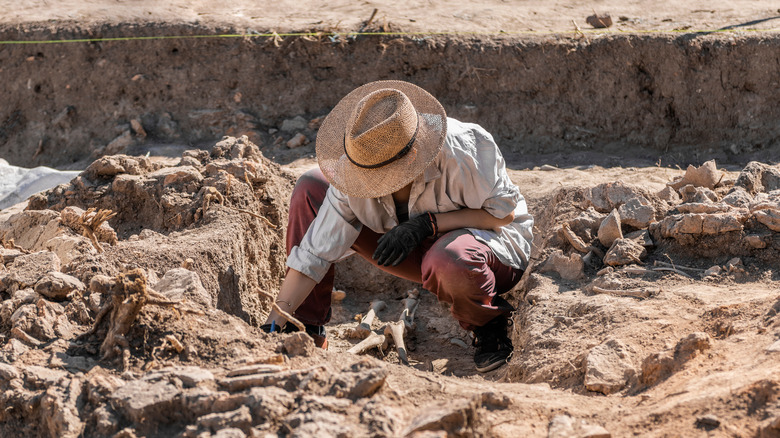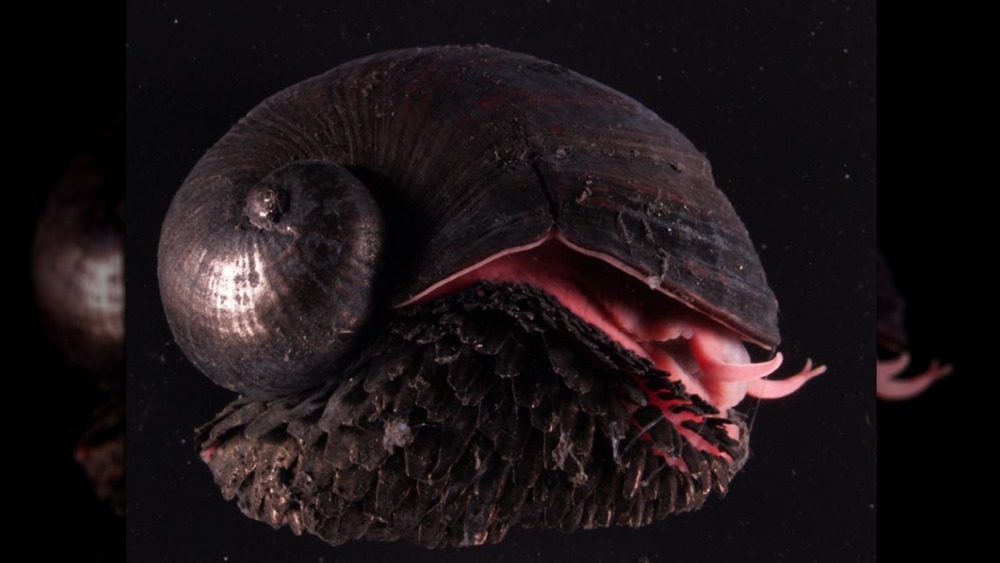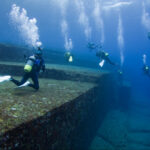
The Most Astonishing Underwater Discoveries
There is so much to learn about the world we live in and so little time! Therefore, time management becomes a priority. If you think you’ve been around and seen most of what the world has to offer, these underwater discoveries will have you thinking differently. Some of them are natural, numinous, and for the most part, inexplicable. Only less than 5% of the world’s oceans have been explored by man, which is a testament to its vastness.

The world’s oceans cover around 80% of the world’s surface. Most of it remains unexplored, virginal blue waters lay hidden in the deep; its origins still unknown to science. As advanced as we think we are sometimes, we are actually clueless. Read further to discover some man-made and natural mysteries of the world’s deep seas.
Yonaguni Monument
These are also known as the Yonaguni Submarine Ruins. Located at the southernmost part of the Ryukyu Islands, in Japan, the ruins were discovered in 1986, when a group of tourism officials visited the area to observe sharks. A large population of hammerhead sharks dwell in the area, and it has now become a popular dive site despite of its strong currents, thanks to the mysterious ruins.

The structure looks as if it were terraces, stepped monoliths assembled thousands of years ago for unknown reasons. However, some scientists are not all too ready to abandon the possibility that this could also be a natural formation.
The New Jersey Train Graveyard
Roaming around New Jersey, one is liable to see decommissioned trains that have been totally abandoned, with most of its body covered with plants and grass. However, a train graveyard underwater has been discovered in 1985 by Paul Hepler.

Hepler was mapping the ocean floor when his equipment picked up on the large metal cases that turned out, after a number of dives, to be locomotives. These are rare Planet Class 2-2-2 T models that used to be manufactured during the 1850s. There is no record about this specific train or how it got submerged off the coast of New Jersey.
A Sphinx
A group of divers were scouring the deep seas, off the coast of the Bahamas, back in 2014, to examine a shipwreck. They carefully studied the ins and outs of their subject, and combed its surroundings to find more clues and artifacts, when they discovered something extremely out of place- a limestone sphinx.

Nobody knows how the statue got there, but they have theorized that it must have come from a region called Wadi Rahanu, in Egypt.
The Lost City Of Heraclion
Thonis-Heracleion used to be a port city located at the mouth of the Nile, in Egypt. It has been mentioned by historians as early as the 12th century B.C., and it is said that its significance came about during the last days of the pharaohs.

As all ancient port cities, this was a major point for trade and industry. Before Alexandria superseded Thonis-Heracleion, this was where Egypt’s taxes were mainly collected. Unfortunately, the soil of the city underwent liquefaction, and it eventually sank 30 feet underwater. This site was discovered by the European Institute for Underwater Archaeology, in 2000.
Lake Michigan Stonehenge
A team led by professor Mark Holley of Northwestern University of Michigan dove deep into Lake Michigan, the largest of all the great lakes in the United States, to explore and study sunken ships, for underwater archaeology. Instead, they were surprised to find concrete structures strikingly similar to the Stonehenge in Wiltshire, England.

It was 40 feet deep underwater, which is shallow, considering the deepest part of the lake is more than 900 feet deep. They studied the slabs of stones, placed in parallel to an ancient shoreline, and found a mastodon carving on it. This contrasts with their initial belief that the structures could be 9,000 years old, for mastodons had become extinct more than 10,000 years ago.
The USS Oriskany
The USS Oriskany was nicknamed The Mighty O, one of the Essex-class carriers commissioned after the Second World War. It was named after one of the bloodiest battles during the Revolutionary War in 1777, the Battle of Oriskany. The ship has been retired from service in 1976, sold for scrap.

The USS Oriskany has found itself useful to the environment beyond its call of duty. It has been sank at the Gulf of Mexico in 2006 and is used as an artificial reef, the largest vessel to be utilized as such, and its presence makes the area a choice destination for divers.
The SS President Coolidge
The roomy SS President Coolidge, that used to serve as a luxury liner traveling from San Francisco to Manila, and other places in the Pacific and Far East, was repurposed by the US War Department when the threat of war became alarming.

It’s design was effective as a troopship, and it was used to evacuate American citizens in Hong Kong when WWII loomed. Unfortunately, it was sunk by mines as it tried to enter a military base in Espiritu Santo, now part of Vanuatu, that was heavily fortified against enemy ships and submarines. It hit two mines before the captain ordered his men to abandon ship.
The Titanic
The tragedy of the RMS Titanic may have later on inspired Hollywood producers to create films surrounding its failed maiden voyage, but the subject remained a taboo for most of the twentieth century. Its accidental collision with an iceberg in 1912 caused more than 1,500 people dead, and British citizens rather avoided talking about it as if hastening to overcome the grief associated with it.

It took many decades to discover the wreck, and it wasn’t an easy undertaking. Robert Ballard and his team of explorers finally found its phantom 12,000 feet underwater, but only after so many attempts had failed, costing millions of dollars. It still remains at the bottom of the ocean albeit split in two; its bow and stern about a third of a mile apart.
The Sunken City in Qiandao Lake
The sunken city in Qiandao lake did not result from a natural disaster. Shi Cheng was created during the Eastern Han Dynasty originally as a county in AD 208. It derived its name from a mountain nearby (Wu Shi), but the whole valley had been flooded to create the Xin’an River Dam in 1959.

The mountains that surround the area are now known as islands after it had all had been partially submerged by water; the Qiandao lake itself is called the Thousand Island Lake. The ancient city of Shi Cheng remains untouched at the bottom, estimated to be over 100 feet deep.
The Baltic Sea Anomaly
You’ll never know what you might encounter while probing the deep. A marginal sea of the Atlantic Ocean, the Ocean X company embarked on a treasure-hunting mission around the area, armed with high-tech equipment to scan the bottom of the sea with sonar imagery.

Expecting to find some clues of ancient treasures, they stumble upon an oddly shaped image of what looks like an alien spaceship on the floor of the northern Baltic Sea. The discovery was made in 2011, and they scampered to get a sample of the structure, which turned out to be made of stone. Scientists are still unsure of its origin, but speculate that it might be a product of glacial and volcanic processes.
Two Cars That Solved Two 40-Year-Old Mysteries
In what was supposed to be a regular day of training for highway patrolmen had transitioned into an official investigation at an Oklahoma lake. The officers were out to test a newly acquired sonar device in 2013 when it detected and formed an unusual graph result from 12 feet below Foss Lake in Custer County.

They found two cars strangely submerged side by side. In it were three bodies each, all of whom were declared missing 4 decades ago. After careful examination, it was found out that they all died of drowning, but it only raises more questions than answers. However, family members left behind express relief, and closure from the discovery saying, “Only God knows what happened.”
This Dornier 17 Bomber
During the Second World War when bombing raids were regularly conducted, the main challenge had always been to outwit or outrun defending fighter aircraft. This prompted the Germans to invent the Dornier Do 17 “fast bomber” in the mid-1930s.

It was faster and also easier to maneuver. Because of its “shoulder wing” design, the aircraft was difficult to hit, and it was capable of running reconnaissance missions as well. This photograph shows a wreck of the aircraft hauled out from the Goodwin Sands in 2013 after it was discovered in 2008. It was reportedly shot down by enemy fire on August 28, 1940.
The SS Thistlegorm
This British armed Merchant Navy ship was built in 1940. It had three successful voyages until it was sunk during its fourth trip, on its way to Alexandria, Egypt. It traveled to the US, Argentina, and the West Indies. A German bomber plane suspected it of being a troop carrier and targeted it, triggering the ship’s own load of bombs and ammunition to explode, causing the SS Thistlegorm to sink in 1941.

Interest over its wreckage had been resumed after Jacques Cousteau discovered it in the 1950s. He was able to raise some of its load, while most of it remains underwater. It’s now a recreational dive site where motorcycles, trucks, and rifles, which it was supposed to deliver to the Allied forces in Egypt, can be seen on deck.
Fields of Manganese Balls
In 2015, a group of German scientists embarked on a routinary expedition in the Atlantic ocean to collect biological samples underwater, and to take deep-sea images for various scientific studies, using an epibenthic sled. Exploring the ocean floor, they instead found a vast deposit of metal balls.

These nodules are heavy, and although they can be found mostly in the Pacific, never have they stumbled upon such concentration in the Atlantic. Some could be as round and large as a bowling ball, and scientists say this could be key to finding rare metals, which are normally used in electronic devices.
48 Tons of Silver
The SS Gairsoppa was built in 1919, and it has served mainly as a civilian ship. It’s port of registry was in Glasgow, however, she was repurposed to serve during the Second World War. The British merchant ship took part in many military convoys, but it was separated from its group in 1941 due to lack of fuel. A U-boat sank it with a torpedo, killing 85 of its passengers.

The SS Gairsoppa had silver bullion in its cargo and, so far, 48 tons had been recovered as of 2013. Its cargo is estimated to be worth £150 million, and it can be found at over 15,000 feet. It’s deemed the largest precious metal recovery on record.
The Antikythera Mechanism
This mechanism was found inside a box at a wreck off the coast of the Greek island of Antikythera. After its discovery in 1902, scientists declared, after careful examination and restoration, that it had a gear inside it.

They say this mechanism, invented by early Greek scientists, can predict eclipses, and astronomical positions for decades in advance. This “analog computer” is said to date back to about 87 BC. It was discovered along with other artifacts such as statues, potteries, and jewelry, and it wasn’t noticed within two years from their possession.
Apollo 11 Rockets
The Apollo 11 is a significant part of American history for landing the first two astronauts on the moon. It was a byproduct of the space challenge between the US and the Soviet Union, and these F-1 engines were lost on the Atlantic ocean after it successfully propelled the ship past the S-1C stage.

The recovery of the rockets took a three-week expedition by punctiliously scanning the seabed with sonar technology. This project was funded by Amazon’s founder Jeff Bezos, and they were able to retrieve various parts of two out of the five rockets used.
The Sweepstakes Wreck
One doesn’t have to be a diving expert to visit the Sweepstakes wreck in Big Tub Harbour. One only has to snorkel in Fathom Five National Marine Park to find it perfectly in place, its hull fully intact, just 20 feet deep. There are several wrecks in the area where tourists might want to explore, but “Sweeps” remains a favorite for being an easy dive.

This schooner was built in 1867 but was damaged off Cove Island while delivering loads of coal. It was tugged back to Big Tug Harbour so it could be repaired, however, the damages were so bad that the boat sank in 1885.
Blackbeard’s Cannons
Edward Teach began as a pirate with the help of Capt. Benjamin Hornigold at an island in the Bahamas in 1716. He first commandeered a sloop he captured but became famous after he captured a French vessel he renamed Queen Anne’s Revenge. Later on, known as Blackbeard for his formidable appearance, he attached 40 cannons around it.

The flagship of the legendary Blackbeard has been discovered in 1996. The expedition was spearheaded by Intersal Inc, a private research company, and they spotted it just 28 feet below, close to Fort Macon State Park in North Carolina. Aside from more than two hundred thousand artifacts, more than 31 cannons have also been recovered and identified.
This Phoenician Shipwreck
International researches could not believe they had discovered what must be the oldest shipwrecks to be ever found in the Mediterranean. This originated from what is now known as the country of Lebanon, and the site was strewn with jars, grinding stones, and potteries. There is still a good chance, researchers said, that the hull of a 50-ft. The ship is still intact.

The wreck was found off the island of Gozo in Malta. It is believed to have sunk in 700 BC, and the 2,700-year-old Phoenician ship was found resting at approximately 400 feet underwater in 2014.
The Silfra Crack
What a feeling it must be to swim in between the growing gap of North America, and Europe. This widens by 2 cm each year, and a tension is created that causes to build the Silfra itself, and the valley; between the tectonic plates that is regularly relieved through earthquakes.

Rocks and large boulders fall to form caves deep within these schisms, because of the movement of the land, and divers love to visit this spot for a chance to explore its exceptionally clean water, and for the thrill to be in between continental plates. The Silfra Crack is located in Iceland.
The Lost City of Pavlopetri
A trip off the coast of Laconia in Greece may lead you to the lost city of Pavlopetri. Its ancient name is unknown, but its modern term means “Paul and Peter’s,” or “Paul’s Stone,” after the two well-known Christian saints.

The lost city is reckoned to be 5,000 years old, making it the oldest among submerged lost cities in the world, and the ruins found on the location date back to the Mycenaean Period. It was discovered in 1967 by Nicholas Flemming across Elafonisos village and the Pounta coast.
The Ice Finger of Death
This photograph has nothing to do with wizardry, but it looks like ice lighting has struck the sea bed to punish a group of starfishes. It is actually a natural phenomenon called “Brinicles,” which occurs when seawater freezes in polar oceans. This causes concentrates of sea brine to be expelled, and a downward projection is shot due to its lower freezing point.

This was scientifically acknowledged in the sixties, but its first image was documented in 2011. Here, a tube of saltwater descends beneath the ice as it makes contact with a neighboring body of ocean water; the process is referred to as “The ice Finger of Death.”
Wreckage From the First Naval Battle
Vestiges from the first naval battle in history have been recovered in 2013 off the coast of Sicily. The conflict was between the fleets of the powerful Roman Republic against the Carthage in the First Punic War on 241 BC.

The Battle of the Egadi Islands resulted to a swift victory in favor of the Romans, and Carthage was forced to surrender the sovereignty of some of its islands. Upon its discovery in 2013, some of the helmets, weapons, and armors were recovered by explorers from about 260 feet below sea level.
Underwater Statues, Cancun
Jason DeCaires Taylor wanted to combine his many skills and talents to produce a new art that’s both useful and unique. He integrated his skills as a sculptor, photographer, marine conservationist, and being a licensed diving instructor, and he came up with works that are considered among the 25 wonders of the world.

The underwater statues in Cancun serves both as an art, which would, later on, develop into a coral reef. It has also become a popular tourist destination, like most of his other projects in the first public sculpture park in the Caribbean sea.
Dwarka
In 1963, archeologists from the Archeological Survey of India conducted investigations that would reveal the existence of the ancient city of Dwarka. As a sacred city, it was first referenced in Buddhist, Jain, and Indian texts, and aside from an interior and external wall being unearthed, fort bastions, and a jetty, too, were excavated.

An underwater expedition was further made by a Marine Archeological Unit, around 1983 to 1990, and further discoveries were made in relation to its satellite towns. Based on the facts gathered from the extensive investigations, scientists believe that coastal erosion was the major cause of its destruction.
The Great Blue Hole
The Great Blue Hole is a huge underwater cave, off the coast of Belize. To fully appreciate its beauty, one has to fly over the sinkhole located near the Lighthouse Reef. It’s surrounding water is a deep dark blue, that is so because it traps the sunlight in.

Not readily visible from the horizon, it only became famous following Jacques Cousteau’s declaration of the hole as one of the best dive sites in the world. It is 407 feet deep, and 984 feet across; an enclosure full of mystery that fires up everyone’s imagination.
The Mahabalipuram Pagoda
A cluster of monuments can be found by the shore at the Bay of Bengal. When Europeans first reached it, a legend already existed at the time, which said that these monuments, along with the Shore Temple, used to have 6 other temples erected within the vicinity. The south Indian city of Mahabalipuram was, therefore, nicknamed “Seven Pagodas” after the legend.

But these myths were only revealed by a tsunami in 2004. As the water receded to signal the building up of huge waves, layers of sand were drawn out revealing the many relics of the ancient temples. Many witnesses saw the columns of the buried temple rise, which confirmed their existence without a doubt.
The Cenote Angelita ‘Underwater River’
Cenotes are more commonly known as sinkholes, and they are a result of a collapse of limestone bedrock that in turn exposes the water underground. These are common in islands and low latitude areas such as in coastlines. The Yucatan Peninsula in Mexico is popular for its “Ring of Cenotes,” in which Cenote Angelita is a part of.

Diving inside the cenote called “Little Angel” means plunging into a cavern where the ancient Maya may have held sacrifices to their gods. The enclosed water is eerily calm and clear, cloaked with mystery. A bit farther down, at approximately a hundred feet, you will see an illusory floor that is actually a border between saline and freshwater.
The Uluburun Shipwreck
Sponge diver Mehmet Çakir had seen a shipwreck close to the east shore of Uluburun and went on to report his discovery. He accounted his experiences in the summer of 1982 with officials of Bodrum Museum of Underwater Archaeology, who made him draw a sketch of the ship.

They were able to recognize the diver’s drawing of “metal biscuits with ears,” as oxhide ingots, and they started a formal expedition themselves that lasted for more than 22,000 dives. The result was a discovery of a Bronze Age shipwreck, and many metal slabs made of copper were also discovered 50 meters from the Uluburun shore.
This Enormous Japanese Submarine
The success of the attacks on Pearl Harbor prompted the Imperial Japanese Navy under the leadership of Admiral Isoroku Yamamoto to up its offensive strategy. The admiral had wanted a major attack targeting the US mainland next, and he believed the I-400-class submarines, as shown in the picture, could effectively achieve their objectives. These subs can carry aircraft underwater, launch them from the surface, and quickly dive to avoid detection.

However, only three of these huge submarines were ever built. They were the biggest subs ever made during the war, and up until the 1960s. This shipwreck was discovered only in 2013, close to the coast of Hawaii.
Underwater Crop Circles
Yoji Ookata, a deep-sea photographer, was awestruck when he discovered in one of his dives in the Pacific, a beautiful pattern imprinted on the bottom of the ocean. Diving closer he saw what he would describe as a “mystery circle,” a sort of artistic work, appearing like a crop circle.

Determined to bring the story to the surface, he dove back with a team of researchers. Armed with cameras for documentation, he was equally shocked by the presence of the artist itself, at work- a small pufferfish, untiring in its efforts, and using only a fin as if it were a brush, working on the geometric patterns. It is more than 6 ft in diameter, a whole playground compared to its size; created for the purpose of luring a mate.
The Ghost Fleet of Truk Lagoon
This dive site has become very famous following a TV documentary made by French oceanographer, Jacques Cousteau. It thrills tourists for its many shipwreck sites, that remain so visible less than 49 feet deep, and with minimal ocean currents.

It is located near New Guinea, and it used to be a military base for the Japanese Imperial forces back in World War II. The sunken warships can be seen underwater, and still on its deck numerous decaying payloads of ammunition, motorcycles, cars, tanks, and a variety of other things. Along the Truk group of islands, you can also see the I-169 Shinohara submarine that was part of the fleet that attacked Pearl Harbor, in 1941.
Mariana Trench
The Mariana Trench is known to have the deepest natural trench in the world. Discovered in 1875 during the Challenger Expedition, located near the Mariana islands in the Pacific Ocean, its maximum depth is reportedly more than 36,000 feet.

The Mariana Trench is home to what must be millions of sea creatures. Among the scary ones we know are the angler fish, and supergiant crustaceans. There is definitely more down in the deep that needs better technology than we have now to explore. The possibilities for new discoveries in the area are limitless.
The MS Zenobia
There is something about shipwrecks that captivates us. To dive deep into the ocean and be in the same space that was once so deadly to many people, a place no one could escape from. To dive with a fiery imagination and perhaps discover the remains of a tragic event.

Tumbled trucks, decadent, can be found in what used to be the MS Zenobia. Its maiden voyage turned into a fiasco in 1980. The Swedish ferry rests in the bottom of the sea, close to Larnaca, Cyprus; turning it into a favorite spot for divers worldwide.
The SS Mahratta(s)
The first Mahratta steamship was launched in 1891, and it served as a troopship for the Boer War in 1900. It ran aground after it was found out that the captain failed to take the right course, not recognizing the Gull Light, and was stuck in the Goodwin Sands.

Fortunately, the weather permitted its passengers to be transferred. Some were even allowed the right of salvage, but eventually, the ship was torn in two by bad weather. A second ship was made in 1917, but it was also wrecked similarly in 1939. Search operations found it on top of the first Mahratta, as if they had long sought each other across the seas.
F4U Corsair
This photograph shows the F4U Corsair, an American fighter aircraft that saw heavy action during the Second World War. The pilot of this carrier-based aircraft encountered a fuel shortage while returning from a mission.

The pilot was able to contact his home base to seek for assistance, and mainly informed headquarters that he was highly unlikely to make it back with little fuel left. He was forced to crash-land at sea but was later on rescued. Unfortunately, the aircraft had not been saved, and it remains at the ocean basin.
Loki’s Castle
Five hydro-thermal vents cluster to form Loki’s Castle, found on the Mid-Atlantic Ridge between Norway and Greenland. When an expedition led by geologist Rolf Pedersen sent out remotely controlled vehicles, they discovered these black-smokers; like chimneys that emit black substances.

The reason these vents exist is because there is much water within the earth’s crust and its surface, therefore the need to vent it. And when its super-heated water makes contact with borderline freezing seawater its particles precipitate, adding to its formation. Upon its discovery in 2008, scientists saw the place teeming with life, even capturing a deep-water squid as shown in this photograph.
The Discovery of the S.S. Central America
In 1857, a 280-foot sidewheel steamer that was carrying $300 million worth of gold, sailed into a hurricane and sank into the ocean. At approximately 160 miles offshore of Charleston, South Carolina, the S.S. Central America, otherwise known as the “Ship of Gold”, sank 8,000 feet below the surface, and was not to be found for another 130 years.

The ship’s enormous cargo of gold, that came from the San Francisco mint and the California Gold Rush, was lost at sea, causing the greatest economic disaster in U.S. maritime history. It wasn’t until 1988 when archaeologists discovered the wreck and pulled up over 7,000 gold coins, 45 gold ingots, and numerous valuable artifacts.
The Underwater Structures in Zakynthos
In the summer of 2013, archaeologists in Greece discovered an ancient underwater city in Alykana, a sandy gulf nestled in the isle of Zakynthos. The discovery included large buildings, cobblestone roads and other relics, including 20 stone pillar bases, each featuring an incision over 30 cm in diameter.

According to preliminary observations, these incisions likely held up the wooden columns of a large public building. Controversy soon surrounded this finding: a study released that same year claimed that the supposed ancient city was not the work of man, but of natural processes.
An Underwater River in the Black Sea
In August 2010, scientists from the University of Leeds discovered an underwater river in the Black Sea. The current of particularly saline water flows in through the Bosphorus Strait and runs across the bottom of the Black Sea. Aside from how amazing it is to imagine there is a massive river flowing under the sea, what makes this discovery even more baffling is the size of the river.

Estimated to be around 10 times larger than the Rhine, Europe’s biggest river, this undersea river would actually be the world’s 6th largest if it were on land! And just like any river on land, this mysterious body of water even has river banks and flood plains, and goes up to 115 feet deep in some places, with a mixed flow of fresh and salt water. This discovery has been an immense help to scientists that are trying to understand how any form of life manages to survive at such ocean depths.
Zhemchug Canyon
In the middle of the Bering Sea, about 170 miles northwest of St. Paul Island in Alaska, lies one of nature’s most beautiful underwater discoveries – the Zhemchug Canyon. Considered the deepest and largest submarine canyon in the world, the Zhemchug Canyon is even deeper, and 20 percent longer, than its on-land counterpart, the majestic Grand Canyon.

The Zhemchug Canyon, named after a Soviet research ship, plunges to a depth of more than 8,500 feet, and can be seen entirely from outer space. The canyon boasts a wide and colorful variety of life-forms, and even after much research, many of the organisms that originate and evolve at such depths remain a fascinating mystery to many scientists.
Lord Krishna’s Lost City
According to Sanskrit literature, there was a holy city called Dwarka, founded by Lord Krishna, one of Hinduism’s major deities. As legend tells it, the city was engulfed by the rising Arabian Sea, causing it to sink and maintain its “myth” status for centuries. But in 1985, archaeologists and Indian Navy divers discovered what they believed to be the remains of this ancient city, dating back to 1500 B.C.

The city, located off the coast of India’s western state of Gujarat, unearthed some seals, artifacts and stone structures that archaeologists say corroborate the descriptions given of the sacred city of Dwarka in ancient Hindu texts.
The Vasa Shipwreck
The Vasa was a Swedish warship that sank on her maiden voyage in 1628. It wasn’t until the late 1950s that the Vasa shipwreck was discovered just outside the Stockholm harbor. Finally, in 1961, the Vasa was salvaged with an almost intact hull. The shipwreck was taken to a temporary museum until 1988, when it was transferred to the Vasa Museum, a maritime museum in Stockholm.

The Vasa shipwreck, and the artifacts discovered with it, have become one of Sweden’s most visited tourist spots, having been seen by over 35 million visitors since 1961. The Vasa has not only become a symbol of the Swedish Empire, but also provided incredible insight into what naval warfare, shipbuilding and everyday life looked like back in 17th-century Sweden.
The Spanish San Jose Galleon
On June 8th, 1708, the Spanish galleon San Jose was sunk by the British after a terrible battle. The 62-cannon sailing ship went down into the darkness of the Caribbean Sea, and took almost 600 people and $20 billion worth of gold, silver and jewels down with it.

The galleon wouldn’t be found for centuries, until in 2015, the Colombian government claimed it had found the ship off the coast of Cartagena, a city in Colombia. Unfortunately, the shipwreck is still underwater, since its extremely valuable cargo has started a nasty custody dispute over who the galleon’s riches belong to.
Ancient Roman Pills
During the 80s and 90s, a team of Italian archaeologists found the ruins of a Roman shipping vessel that sank off the coast of Tuscany around 120 B.C. In 2004, after years of excavating and retrieving countless artifacts, the archaeologists discovered something fascinating among the ruins – a 2,000-year-old medicine chest.

Among other instruments, researchers found several tin vessels inside the chest, and inside each one were five flat, circular grey medicine tablets. Since the vessels had been sealed, the tablets were intact, giving us a rare, fascinating glimpse into what medicine looked like in Roman times.
Elongated Skulls in Underwater Cavern in Mexico
In January, 2014, a team of archaeologists went on an expedition to explore a mysterious sinkhole in southern Mexico. According to local legend, the flooded cavern is said to be guarded by a feathered serpent with a horse head, and has terrified local villagers for centuries. A fear that started to make complete sense after the team of archaeologists found the submerged cavern littered with human bones and elongated skulls.

The cavern, named Sac Uayum, is a cenote in the ancient Maya city of Mayapán, located about 40km south of the Mexican state of Yucatán. It is said that these cenotes were sometimes used by the Mayans to perform sacrificial offerings, which would explain the creepy skulls and bones. Sac Uayum is so steeped in legend that when lead archaeologist, Bradley Russell, and his team decided to explore the cavern, they contacted a local shaman before they started so he could ask the gods to allow the explorers to get close to it without being harmed by the fabled feathered serpent.
Giant Underwater Pyramids
In 2013, an amateur sailor named Diocletian Silva was fishing on his yacht in the Atlantic Ocean when, suddenly, the boat’s radar picked up a strange signal. Silva soon realized he had stumbled upon a colossal structure resembling a pyramid, and its tip was immersed about 40 feet below water.

The pyramid, located off the coast of the Azores islands in Portugal, reaches up to 60 meters in height, with a base of over 8,000 sq. meters. The structure is so perfectly shaped that Silva believes it might belong to the legendary lost city of Atlantis. But despite several theories about its origin and existence, experts are still unable to fully understand or explain this discovery. Which just makes it all the more fascinating.
Cleopatra’s Sunken Palace
In 1998, an underwater archaeologist named Franck Goddio gathered a team and began an excavation off the shores of Alexandria, Egypt. What he found was astonishing; Goddio had discovered Queen Cleopatra’s royal palace, which had been lost in deep, dark waters for over 1,600 years. Fascinating artifacts were found almost intact, including red granite columns, statues, art, a sphinx, and even the foundations of the palace.

The Ptolemaic palace was sited in Antirhodos, an island founded around 250 B.C. in the eastern harbor of Alexandria. Antirhodos was an island of luxury filled with majestic, adorned columns that led the way to Cleopatra’s lavish palace. However, 400 years after Cleopatra’s death, earthquakes and tsunamis buried the entire island, along with the massive palace, under the sea. There are future plans to create an underwater museum, along with guided tours of the site.
The Ancient Settlement in Lake Issyk-Kul
A group of scientists discovered an entire settlement underwater in Lake Issyk-Ku, a lake that is in the Tian Shan mountain range in eastern Kyrgyzstan. This unique find is believed to be the 2,500-year-old Saka settlement.

According to legends, Saint Matthew, one of the disciples of Jesus, was laid to rest in Issyk-Kul. Researchers believe that some of the unearthed artifacts from the region could verify these ancient claims.
A 3,200-Year-Old Boat Wreck in Croatia
In March 2014, renowned marine archaeologist and researcher, Giulia Boett, discovered a boat wreckage that dated back to 1200 BC in Zambratija Cove, Croatia. That boat (which was still relatively intact) measured 7 meters long and 2.5 wide, and has been classified as a Bronze Age vessel. The boat is made up of rope, wood, roots and willow branches.

According to researchers, this method of shipbuilding belonged to an ancient civilization of people who occupied the Adriatic region during the end of the Roman era. Boetto and a team of researchers are currently in the middle of the lengthy process of recreating a 3D model of the boat.
Britain’s Doggerland Bridge
A submerged land bridge that has been dubbed ‘Doggerland’ was discovered underwater. Doggerland is believed to be the link between the British Isles and the mainland of Europe. Researchers speculate that this sunken landmass was mostly occupied by mammoths and hunter-gatherers and that it most likely sunk around 8, 500 years ago.

This region still needs to undergo years of studies, but for now, researchers, scientists, and explorers are left to their imaginations.
The Mysterious Pathway of Bimini Road
A path of square stones called the Bimini Road, in the Bahamas, was found by divers in the 1930s. While the stones were spotted only six meters below the surface, experts still do not quite know their meaning or purpose. Some researchers believed that they were naturally formed, while others have developed some more interesting theories that involve divine protectors from Ancient Egypt.

Another theory is that the stones could be remnants of a path that led to the mythical city of Atlantis. Perhaps some things will forever remain a mystery.
The Ancient Village of Atlit Yam
Near Haifa, a city in the North of Israel, an ancient village named Atlit Yam was discovered. This sunken village dates back to the Neolithic period- the age of early man. While the village itself isn’t necessarily as physically impressive as other pre-historic discoveries, such as Stonehenge, there are a few significant and quite impressive structures, such as wells made of stone and rectangular-shaped houses.

Little evidence remains about the people who lived there. According to experts, “the village inhabitants abandoned it before a tsunami triggered by a volcano engulfed the village.”
A Sunken Pirate City in Jamaica
Port Royal, once known as the “wickedest city on earth”, is a village in the Kingston Harbor of Jamaica. Founded in 1518, Port Royal used to be known as a hub of sin, where pirates, corruption and alcohol abounded. So, when a massive earthquake in 1692 sank a big part of the city, many people just believed it was justice being done.

By the time the devastating earthquake had stopped, 33 acres of the city were underwater, and 2,000 people lost their lives. It was only nearly 300 years later that, in 1981, archaeologists from Texas A&M University started investigating the site. Since then, Port Royal has become a window into ancient history, with archaeologists recovering historical documents, architectural ruins, and countless artifacts.
Mongolian Ships from the 13th Century
In 2015, a team of archaeologists found a Mongolian shipwreck off the coast of the Japanese city of Nagasaki. After careful research, they concluded the wreck was part of a fleet sent by Kublai Khan, the founder of the Yuan Dynasty, to invade Japan in the 13th century.

Among the wreck, archaeologists found iron utensils, roof tiles, porcelain vases and bowls, and several other artifacts. This provides a fascinating insight into what materials and building techniques were used by the Mongolians more than 700 years ago.
The ‘Black Jack’ Aircraft Wreck
On July 11, 1943, a U.S. B17-F Bomber was returning to base, when a severe engine failure during a terrible storm caused the plane to go off-course, run out of fuel, and drop down into the ocean. The plane was nicknamed the ‘Black Jack’ because it had the number 21 at the end of its serial number.

Fortunately, the crew was rescued in time and survived, but the ‘Black Jack’ sunk to the bottom of the ocean. The aircraft was found 43 years later near Boga Boga, Cape Vogel, in Papua New Guinea, and was mostly intact. In fact, this has become one of the world’s most famous dive sites, because it is so well-preserved that even the plane’s weaponry and equipment are still in place.

Natural Cures That Are Supported by Science

Can Animals Sense Natural Disasters?

Add Technological Flair to Your Kitchen With These New Devices

Hummingbirds See Colors We Can’t Even Imagine

Incredible Concept Cars That Were Never Made

Through the Lens of History: Images That Shaped the Last Century
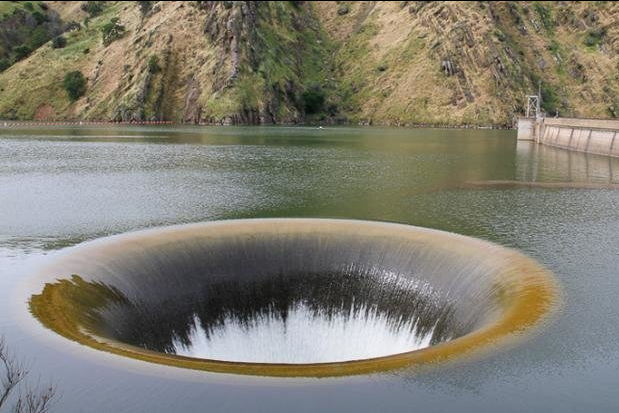
Most Astonishing Photographs Taken By Flying Drones

Common Magician’s Biggest Tricks Explained
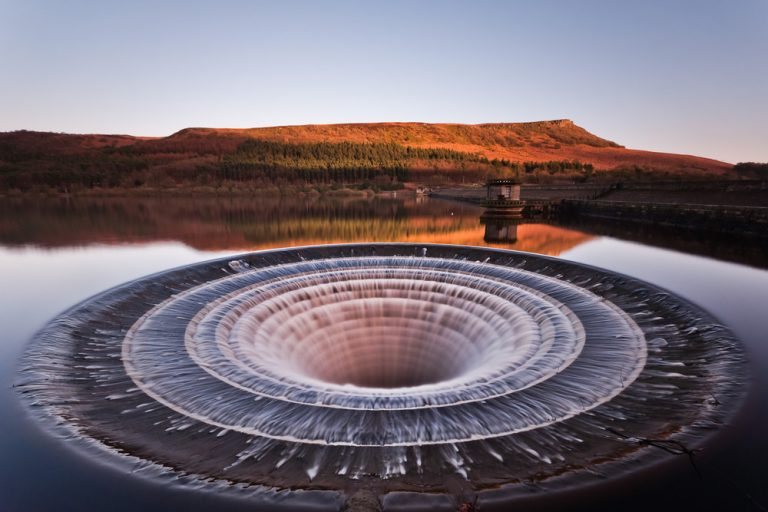
The Story Behind The Mysterious Hole Spotted In A Lake In California
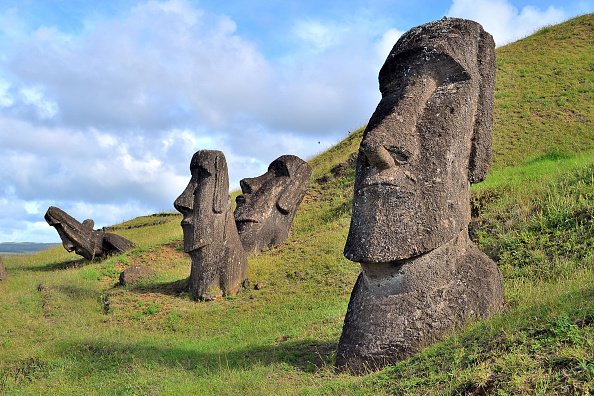
What Archeologists Found on Easter Island Left Them Questioning Everything

